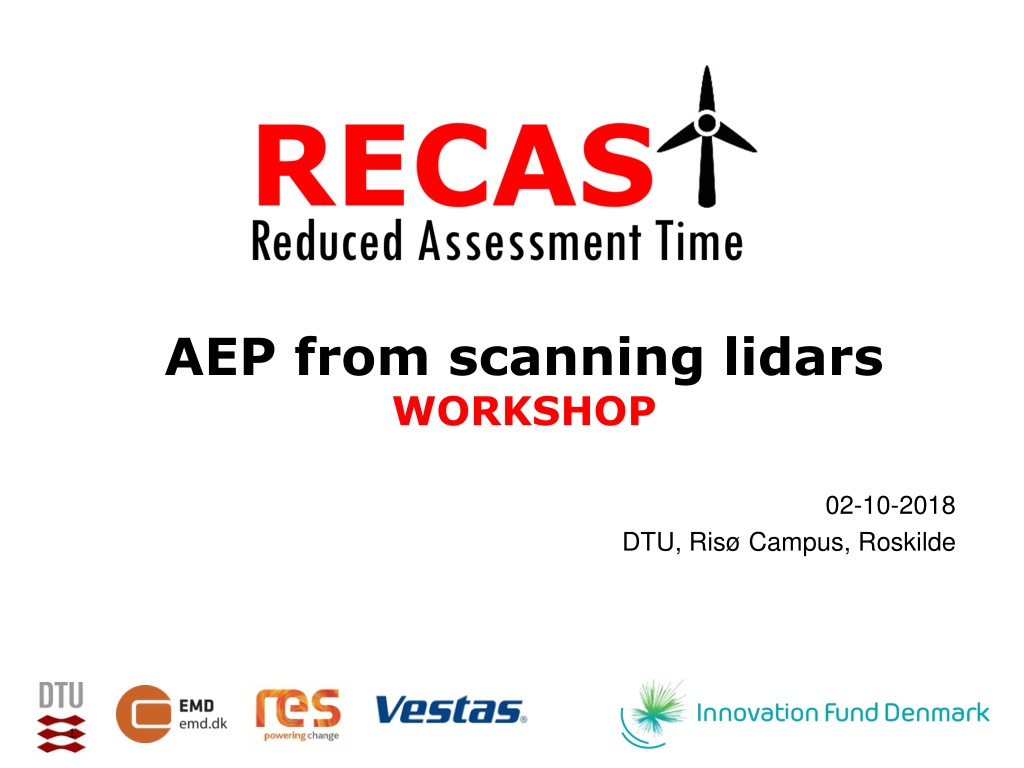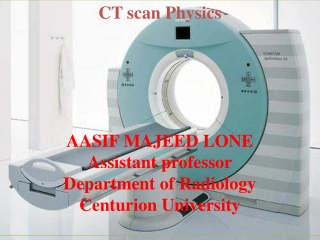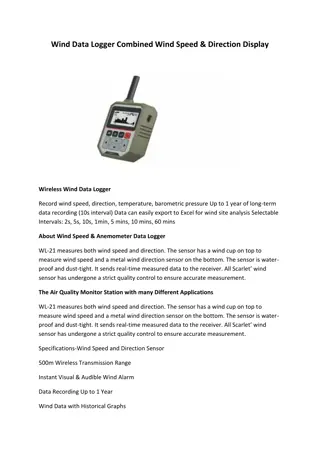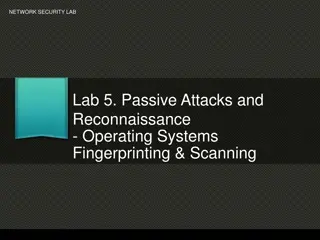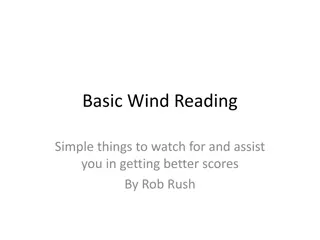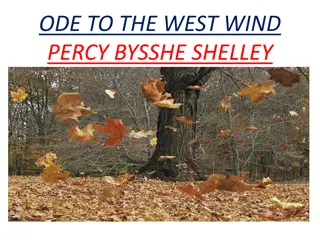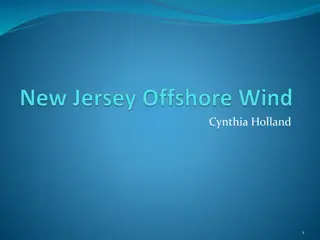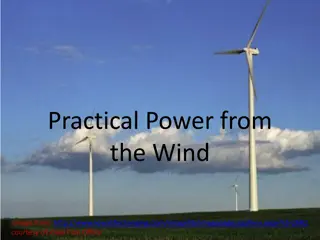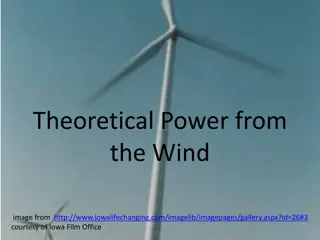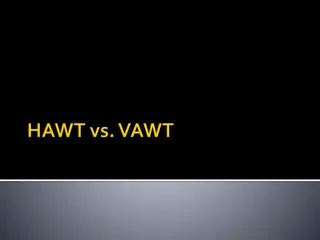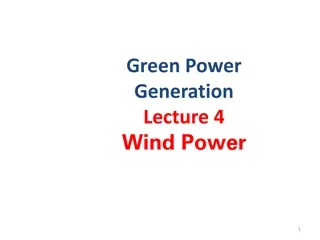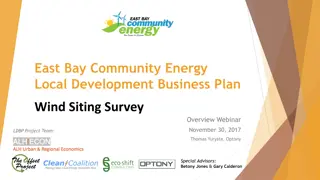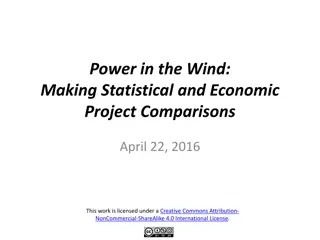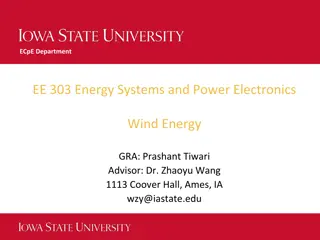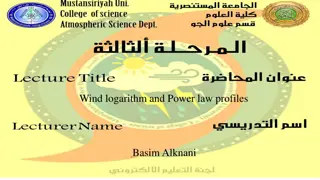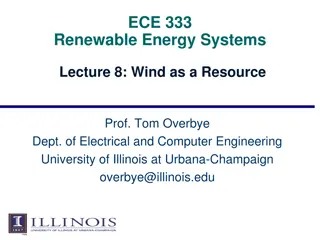Advantages of Scanning Lidars in Wind Resource Assessment
Scanning lidars offer a cost-effective and flexible solution for wind resource assessment compared to traditional met masts. They provide multi-point measurements without the need to relocate hardware, reducing uncertainties and risks in wind energy projects. This technology enhances the accuracy of wind resource predictions and makes wind farm development more attractive to investors.
Download Presentation

Please find below an Image/Link to download the presentation.
The content on the website is provided AS IS for your information and personal use only. It may not be sold, licensed, or shared on other websites without obtaining consent from the author. Download presentation by click this link. If you encounter any issues during the download, it is possible that the publisher has removed the file from their server.
E N D
Presentation Transcript
AEP from scanning lidars WORKSHOP 02-10-2018 DTU, Ris Campus, Roskilde 1
RECAST Vision Holistic methodology for credible wind resource prediction Using WindScanners Use WindScanners to measure at multiple points over site Lower microscale wind flow uncertainty Shorter WRA (measurement) duration Wind farm project more attractive to banks Lead to increased AEP by >2% 2 DTU Wind Energy, Technical University of Denmark 28 February 2018
RECAST outcome Decision tool Decision tool Windscanner measurements Windscanner measurements Advanced microscale flow model Advanced microscale flow model Smart measurement campaign design: When and how long? Where? Uncertainty vs cost User friendly WSS ( (Automatic trajectory, Automatic data transfer) Multi-point measurements 3 DTU Wind Energy, Technical University of Denmark 28 February 2018
RECAST project plan 2018 2019 2020 Proof of concept : AEP1= 1 mast * 12 months Demonstration campaign Kick off AEP2= 5 masts * 4 months vs Windscanner deployment at RES site Development of uncertainty model Development of WSS software Site suitability aspects TI measurements using Wind scanner Shear and TI long term extrapolation WAsP upgrade Development of measurement campaign design tool(when? Where?) 4 DTU Wind Energy, Technical University of Denmark 28 February 2018
Scanning lidar Wind lidar with laser beam that can be steered in any azimuth and elevation position 5 DTU Wind Energy, Technical University of Denmark 28 February 2018
WindScanner OEM Scanning lidar Hardware + DTU WindScanner software WindScanner System (WSS): Several Wind Scanners + Master computer to synchronise them 6 DTU Wind Energy, Technical University of Denmark 28 February 2018
What is the opportunity? MET. MAST SCANNING LIDARS Erecting masts in complex terrain Difficult, sometimes impossible? Expensive Lidars are easier to deploy, mobile Expensive Scanning lidars can provide measurement at several positions without having to move the hardware Lower micro flow model uncertainty Lower AEP uncertainty Lower risk and lower cost of energy Allow higher uncertainty on LTC? Limited number of masts (1or 2 per site) 7 DTU Wind Energy, Technical University of Denmark 28 February 2018
What is the opportunity? (continues) MET. MAST SCANNING LIDARS Good availability (except in cold conditions) Data availability can be an issue (e.g. fog, clean air) TI measurements TI measurements different from point measurements (volume averaging and cross- contamination) Best practices, standards High acceptance Relatively new technology 8 DTU Wind Energy, Technical University of Denmark 28 February 2018
Purpose of the Workshop Gather key people to discuss: How much are scanning lidars used for site assessment today? What are the pros and cons? What are the gaps/barriers preventing to use them more? What could we do to close those gaps? 9 DTU Wind Energy, Technical University of Denmark 28 February 2018
Agenda 9:00 What is the opportunity? (Rozenn Wagner, DTU) 9:40 Experience gained from Dublin Bay Scanning Lidars (RES on behalf of OWA) 10:25 Coffee Break 10:45 Five years of success and failures with WindScanners (Nikola Vasiljevic, DTU) 11:30 Online Survey: The gaps for using Lidars for AEP? 12:00 Lunch + Demo of Windscanner 13:40 Experience gained from the floating LiDAR roadmap (Megan Smith Carbon trust) 14:25 What should RECAST do to close gaps? (Coffee + breakout groups) 16:00 Plenum discussion: Findings of groups 16:30 The End 10 DTU Wind Energy, Technical University of Denmark 28 February 2018
